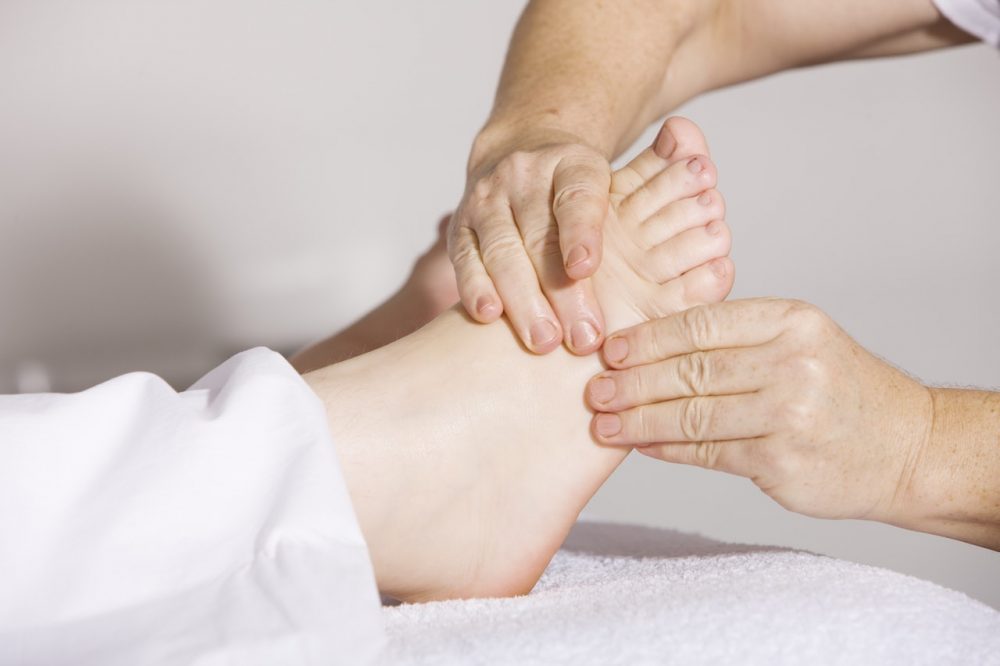If you want to protect your toes and feet from the complications of diabetes, then it’s smart to practice the following 11 steps as a comprehensive foot care regimen:
1) Check Both Your Feet Each Day: It’s recommended by podiatrists and orthopedists that you examine both of your feet, including the bottoms and spaces between toes every morning and evening. Given that many diabetics might have diabetic peripheral neuropathy, only daily examinations can rule out trauma their feet might suffer without their knowledge. Look out for punctures, splinters, irritated spots, blisters, sores, and cuts. If you’re not able to see the bottoms of your feet easily, then ask someone you love to help you, prop up a mirror onto a chair in front of you so you can extend your legs, or just hold a long-handled mirror underneath your feet.
2) Consult Your Physician About Bunions, Warts, Hangnails, And Calluses: If you’re already prone to issues with wounds healing, then rethink trying to deal with them on your own. If you have your doctor look over things, it can help avoid minor issues having the chance to turn into bigger ones.
3) Be Smart In Picking Your Footwear: Wear soft and clean shoes and socks that are well-fitting and cover up your toes and feet. You should never go barefoot, even in the comfort of your own home. Consult a podiatrist about which shoes are best for the current shape or condition of your feet. A number of health insurance programs might even help you once a year in paying for a pair of special shoes that have inserts specifically for diabetes patients.
4) Avoid Temperature Extremes: Do you have nerve damage? If you do, then odds are not good that you’d ever notice if cold or heat start impacting your feet. You need to always wear shoes that are appropriate for the current weather, while also limiting your exposure to temperature extremes.
5) Trim Your Toenails Routinely: Per recommendations from the American Diabetes Association, trim straight across your toenails and then file them down to have smooth edges. If you aren’t able to see them that well or you just have trouble actually reaching your feet, you can ask your doctor to handle toenail trimming for you. You can also get a professional pedicure, but make sure you only use a clean salon. Also, tell your manicurist if you have diabetes. If you’re able, consider the safety of bringing your own pedicure tools.
6) Wash Both Your Feet Daily: Even when you keep your feet dry and covered, you should wash them every day, patting them gently dry.
7) Shoes: Good quality shoes for diabetics can make all the difference to the comfort of your feet. They could be worth investing in and save you a lot of trouble.
8) Get Some Exercise: Physical activity enhances your circulation, which in turn improves your foot health.
9) Contact Your Physician About All Wounds You Suffer Or Find: If you have any foot issue that isn’t improving within 24 hours, it’s a good idea to check in with your physician for their professional advice.
10) Practice Good Control Of Your Blood Sugar: When you regularly achieve your blood-sugar targets, you help protect your feet. Just how robust is the link between blood sugar control and foot protection? Anyone with diabetes who has a higher A1C level run a higher risk of lower-limb amputations.
11) Schedule A Foot Exam: You need to get your feet examined by a doctor annually, if not more often, even when you haven’t noticed any blisters or sores. People that have a loss of feeling in their feet, deformed feet, or foot ulcers should get their feet checked every time they have a medical visit. That’s per recommendations laid out in the January 2015 issue of the Diabetes Care journal.
Today is not too late to be the day you start taking care of your feet. Make certain you continue with great foot care, even in those times you keep your blood sugar under control.
Recent Posts
- Castor Oil For Better Hair Growth: Is It Myth Or Fact?
- Exploring the Differences Between Sermorelin, Ipamorelin, Ibutamoren, GHRP2, and GHRP6: Understanding Their Role in Human Growth Hormone Regulation
- Unraveling the Mystery: Understanding the Causes and Prognosis of Ventricular Tachycardia Without Apparent Heart Disease
- Understanding Grandparents’ Rights in Oklahoma: Navigating Visitation and Legal Protections
- 10 Reasons to Consider Hypnotherapy for Your Health

